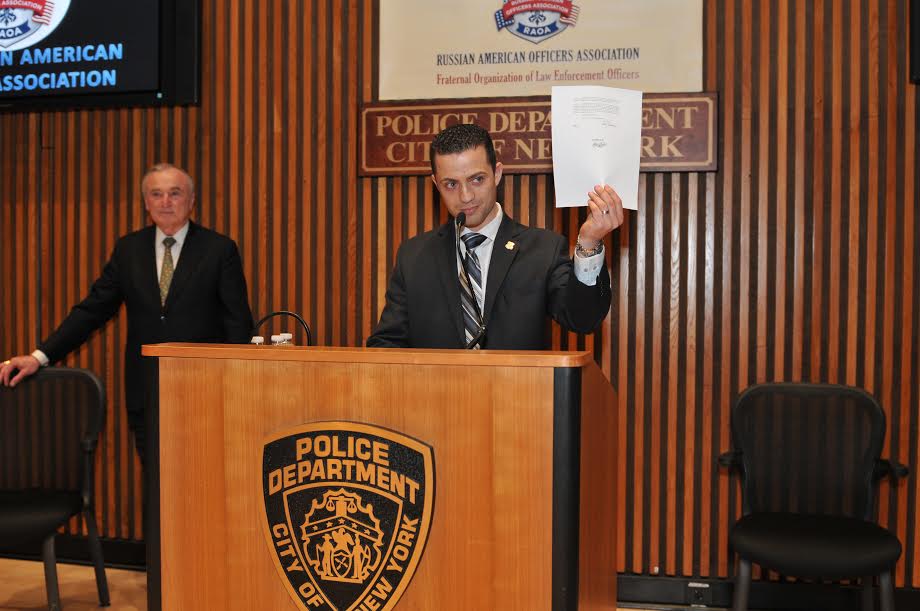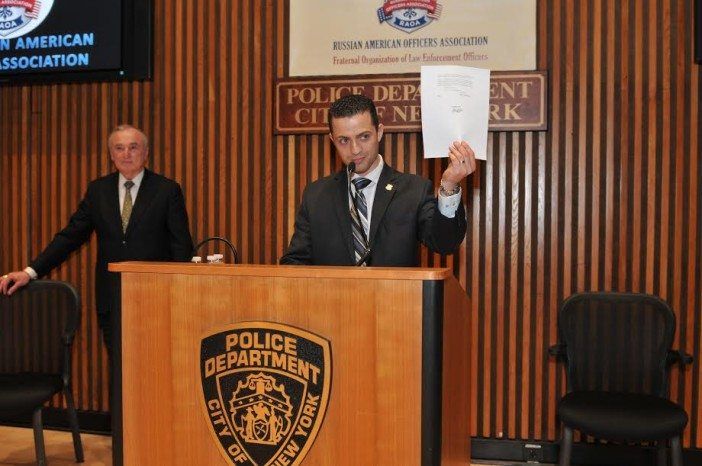Russian-American Cops Reach Milestone With Official Recognition Of Fraternal Organization


Russian-Americans are being recognized for their contributions to the New York City Police Department, as the Russian American Officers Association (RAOA) is now listed as an official department fraternal organization.
The group’s new status became official on March 24, when more than 100 members of the organization converged on 1 Police Plaza for a ceremony with Commissioner Bill Bratton. In true Eastern European fashion, they arrived with gifts – a samovar, or traditional Russian tea urn, presented to Bratton – and food, brought in from Brighton Beach.
It’s the first fraternal organization to become recognized in six years, according to the group’s leadership, and also the first time it’s happened at any police department in the nation.
“This is a true milestone for us. Our members have been tremendously successful within their ranks,” RAOA President Michael Belogorodsky told Sheepshead Bites, noting that 41 percent of the group’s members have received promotions, and some as many as four promotions up the ranks.
Fraternal organizations are recognized based on size and their members’ contributions to the department, among other factors. They exist to provide camaraderie among members and advocate for their needs. Additionally, the RAOA lists as its goals improving the relationship between law enforcement and the Russian-American community, as well as bolstering the reputation of Russian-Americans in law enforcement.
The induction comes 12 years after the group was formed by a handful of NYPD members hailing from former Soviet States. Since its establishment, it’s expanded to approximately 10 states, with members representing 33 local, state and federal law enforcement agencies.
Its reach is long, but its roots remain local. Approximately one quarter of the group’s members reside in Southern Brooklyn neighborhoods, and approximately 30 members work in the NYPD’s 60th, 61st and 62nd Precincts, which together cover Brooklyn between Dyker Heights to Gerritsen Beach, said Belogorodsky. These include two lieutenants, five sergeants and one detective, he said.
“For a group of immigrants this [recognition] is big,” said Belogorodsky.




